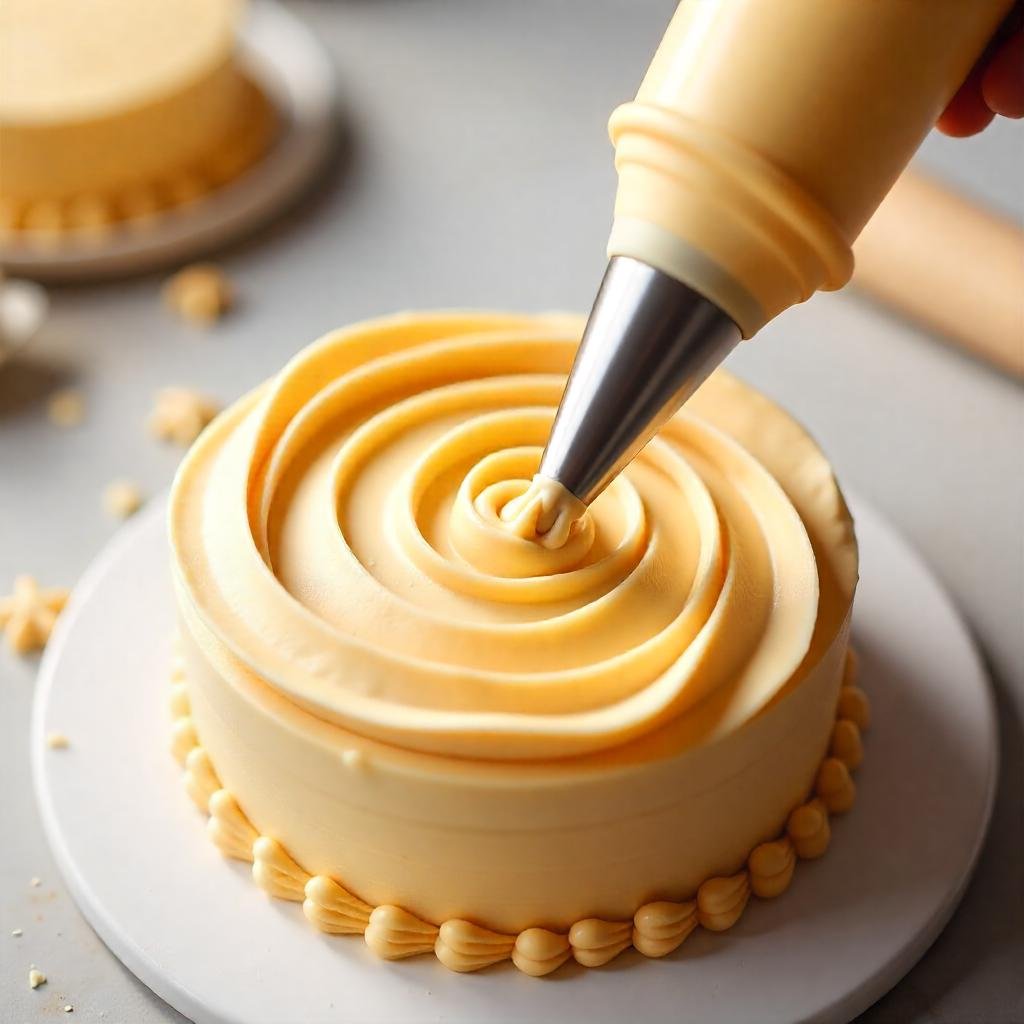
Dreaming of flawlessly decorated cakes with a frosting that’s as smooth as silk? If you’ve ever struggled with a grainy texture in your buttercream, you’re not alone. Achieving perfectly smooth buttercream can feel elusive, but the truth is, with a few key techniques and an understanding of your ingredients, you can say goodbye to grainy frosting forever. This guide will walk you through the secrets to creating a velvety smooth buttercream that will elevate all your baking endeavors.
Understanding the Ingredients for Smooth Buttercream
The foundation of beautifully smooth buttercream lies in the quality and preparation of your ingredients.
- Butter: This is your star player. Opt for unsalted butter, as the salt content in salted butter can sometimes affect the texture. Most importantly, the temperature of your butter is paramount. It should be softened but still cool to the touch, not melted or greasy. Think of it as being pliable – you should be able to make a slight indent with your finger without it being oily.
- Sugar: Powdered sugar (also known as confectioners’ sugar or icing sugar) is the standard choice for most buttercream recipes because it dissolves easily, contributing to that smooth buttercream texture. Make sure your powdered sugar is fresh and free of lumps. Sifting it before use can also help prevent any grainy bits in your final product.
- Liquid: A touch of liquid, like milk or heavy cream, helps bring the buttercream together and adjust its consistency. Use it sparingly and at room temperature to ensure it emulsifies properly with the butter and sugar.
The Mixing Process: Your Path to Smooth Buttercream
The way you combine your ingredients is crucial for achieving that perfectly smooth buttercream texture.
- Creaming the Butter: Start by creaming the softened butter on its own until it’s light and fluffy. This incorporates air and creates a good base for the rest of the ingredients. Don’t rush this step; it usually takes a few minutes with an electric mixer.
- Gradually Adding the Sugar: With the mixer on low speed, gradually add the sifted powdered sugar to the creamed butter, one cup at a time. Mixing on low at this stage prevents a cloud of sugar from puffing up and also helps the sugar incorporate evenly for a smooth buttercream.
- The Importance of Mixing Time for Smoothness: Once all the sugar is added, increase the mixer speed to medium and beat the buttercream for a significant amount of time – often 3-5 minutes or even longer, depending on the recipe. This extended mixing helps dissolve the sugar completely and creates a light, airy, and smooth buttercream texture. Don’t be afraid to scrape down the sides and bottom of the bowl frequently to ensure everything is evenly incorporated. This is where those pesky hidden lumps of butter or sugar often reside!
- Adding Liquid and Flavor: Once the smooth buttercream is forming nicely, you can gradually add your liquid and any flavor extracts. Mix until just combined. Be careful not to overmix at this stage, as it can sometimes introduce air bubbles that are harder to get rid of.

Banishing Graininess: Pro Tips for Extra Smooth Buttercream
If you’re still finding your buttercream a bit grainy, here are some extra tips to ensure a truly smooth buttercream finish:
- Sifting is Your Friend: Always sift your powdered sugar to remove any lumps that can contribute to a grainy texture in your smooth buttercream.
- The Double Boiler Trick: If your buttercream is grainy even after extended mixing, try this: Scoop out about a quarter of the buttercream into a heatproof bowl and place it over a simmering pot of water (a double boiler). Stir gently until it’s just slightly melted and runny. Then, pour this melted portion back into the rest of the buttercream and beat on medium speed until the smooth buttercream comes together. The slight heat helps dissolve any stubborn sugar crystals.
- High-Speed Blending (Optional): For an ultra-smooth texture, some bakers use a high-speed blender to process the finished smooth buttercream for a minute or two. Be cautious not to over-blend, which can introduce too much air.
Closing:
Mastering the art of smooth buttercream is a game-changer for any baker. By focusing on ingredient temperature, proper mixing techniques, and utilizing these pro tips, you can consistently create a frosting that is both beautiful and delicious. And when you present your perfectly frosted creations, remember that a sturdy DuraDelish cake drum provides the ideal support. Share your journey to smooth buttercream with us in the comments below!
